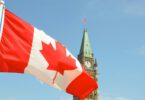Immigration, Refugees, and Citizenship Canada (IRCC) has declared new policies concerning the qualification for the postgraduate work permit.
According to CIC News, beginning on November 1st, 2024, foreign graduates will need to meet extra conditions associated with their areas of study to be eligible for the Postgraduate Work Permit.
The modifications made to the employment permit laws look forward to aligning the work permit procedure with federal labor market requirements and making sure that it fits the market in Canada.
The IRCC, based on reports, is attempting to make the immigration procedure ideal so that it impactfully sponsors the requirements of employers and the economy.
QUALIFIED AREAS OF STUDY
Informations notify that the Post Graduate Work Permit qualification currently concentrates on certain study areas that align with the Express Entry classifications presented in 2023. These areas have to do with:
- Transport
- Agriculture and Agri-Food
- Trade
- Healthcare
- Science, Technology, Engineering and Mathematics (STEM)
Every area of study is categorized using the Classification of Instructional Programs (CIP), which classifies academic courses in Canada. This system is similar to the National Occupation Classification (NOC) utilized for employment.
These are some instances of qualified programs within these areas:
- Transport: Air traffic controller (CIP 40.0105), truck driver (CIP 49.0205).
- Agriculture and Agri-Food: Agricultural business management (CIP 01.0101), animal health (CIP 01.0903).
- Trade: Electrician (CIP 46.0302), plumbing technology (CIP 46.0503).
- Healthcare: Exercise physiology (CIP 26.0908), physical therapy assistant (CIP 51.0806).
- STEM: Computer programming (CIP 11.0201), chemical engineering (CIP 14.0701)
The IRCC motivates new immigrants to consult its webpage for an extensive list of Post-Graduate Work permit qualified schemes.
WHAT TO UNDERSTAND
As revealed in the report, foreign graduates seeking to verify their program’s qualification can discover their corresponding CIP code by observing these stages:
- Go to the Statistics Canada website for the 2021 CIP.
- Users can use the search bar to log in using the keywords associated with their program or navigate via obtainable area links.
- Access subclasses applicable to their area.
- Select the proper sub-class to check explicit program details, which include instances and exemptions.
This procedure assists in making sure that graduates can correctly specify their qualification setting.
NEW LANGUAGE CONDITIONS
Furthermore, in research conditions, Immigration, Refugee, and Citizenship Canada has also presented language measures for Postgraduate Work Permit candidates. These conditions vary depending on the study level.
University programs such as bachelor’s, master’s, and doctoral degrees require students to accomplish Canadian Language Benchmark (CLB) 7 in English or NCLC 7 in French across the four language fields.
Foreign students can obtain the NCLC credential by taking endorsed language evaluation exams that assess their French language experiences. These exams typically estimate listening, speaking, writing, and reading skills.
When they conclude the exams, they get a score corresponding to the NCLC levels. Students can discover exam hubs and information concerning the evaluations through organizations identified by the Canadian authority, including the Center for Canadian Language Benchmarks.
- Other institutional programs: same language conditions as above, with a concentration on qualified areas of study.
- College programs or other non-institutional programs: Students must accomplish CLB 5 in English or NCLC 5 in French across the four fields and must graduate from a qualified area.
Students applying for a Postgraduate Work Permit before 1 November do not have to satisfy the new areas of study conditions. Still, they are required to fulfill the existing language measures.







